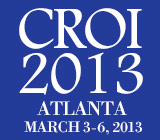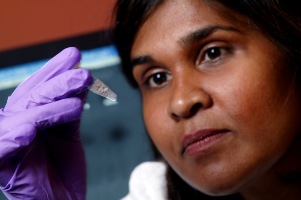 In a first for HIV medicine, a baby has been functionally cured of HIV after physicians treated the infant with antiretrovirals (ARVs) beginning about 30 hours after the child was born, which is not common, The New York Times reports. Scientists from the Johns Hopkins Center in Baltimore and the University of Massachusetts Medical School in Worcester announced the results of this case study during the opening of the Conference on Retroviruses and Opportunistic Infections (CROI) in Atlanta.
In a first for HIV medicine, a baby has been functionally cured of HIV after physicians treated the infant with antiretrovirals (ARVs) beginning about 30 hours after the child was born, which is not common, The New York Times reports. Scientists from the Johns Hopkins Center in Baltimore and the University of Massachusetts Medical School in Worcester announced the results of this case study during the opening of the Conference on Retroviruses and Opportunistic Infections (CROI) in Atlanta.
Following further research, this medical breakthrough may revolutionize the care of infants born with HIV around the world, as well as lead to new insights about the formation of viral reservoirs that make curing HIV otherwise so difficult.
To date, only one other known person in the world, the so-called “Berlin Patient,” has been cured of the virus. In his case, it was a sterilizing cure, in which all virus is removed from the body. In the baby’s case, the functional cure allows the immune system to control the virus.
 |
| Deborah Persaud, MD, associate professor of infectious diseases at the Johns Hopkins Children’s Center and lead author of the report. |
At 18 months of age, the child’s ARVs were discontinued for unknown reasons. About half a year later, medical professionals cared for the child again and discovered that the child maintained an undetectable viral load (less than 20) and had no HIV antibodies. After screening the child with a highly sensitive viral RNA and DNA test, the medical team found extremely low viral levels.
“This case suggests that providing antiretroviral therapy within the very first few days of life to infants infected with HIV through their mothers via pregnancy or delivery may prevent HIV from establishing a reservoir, or hiding place, in their bodies and, therefore, achieve a cure for those children,” said Deborah Persaud, MD, associate professor of infectious diseases at the Johns Hopkins Children’s Center, who presented the findings at CROI.
To read the National Institute of Allergy and Infectious Diseases release, click here.
To read the New York Times article, click here.






20 Comments
20 Comments